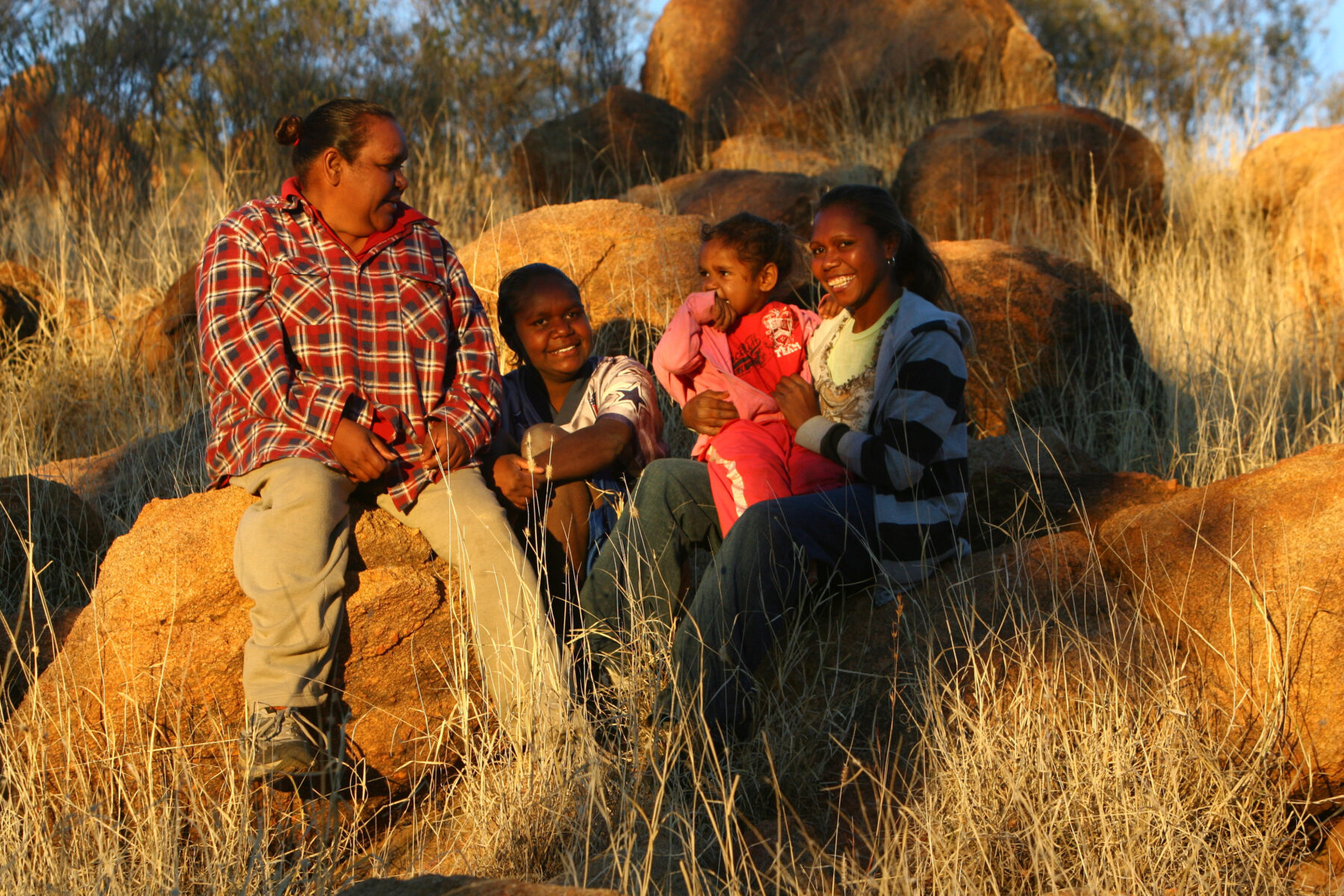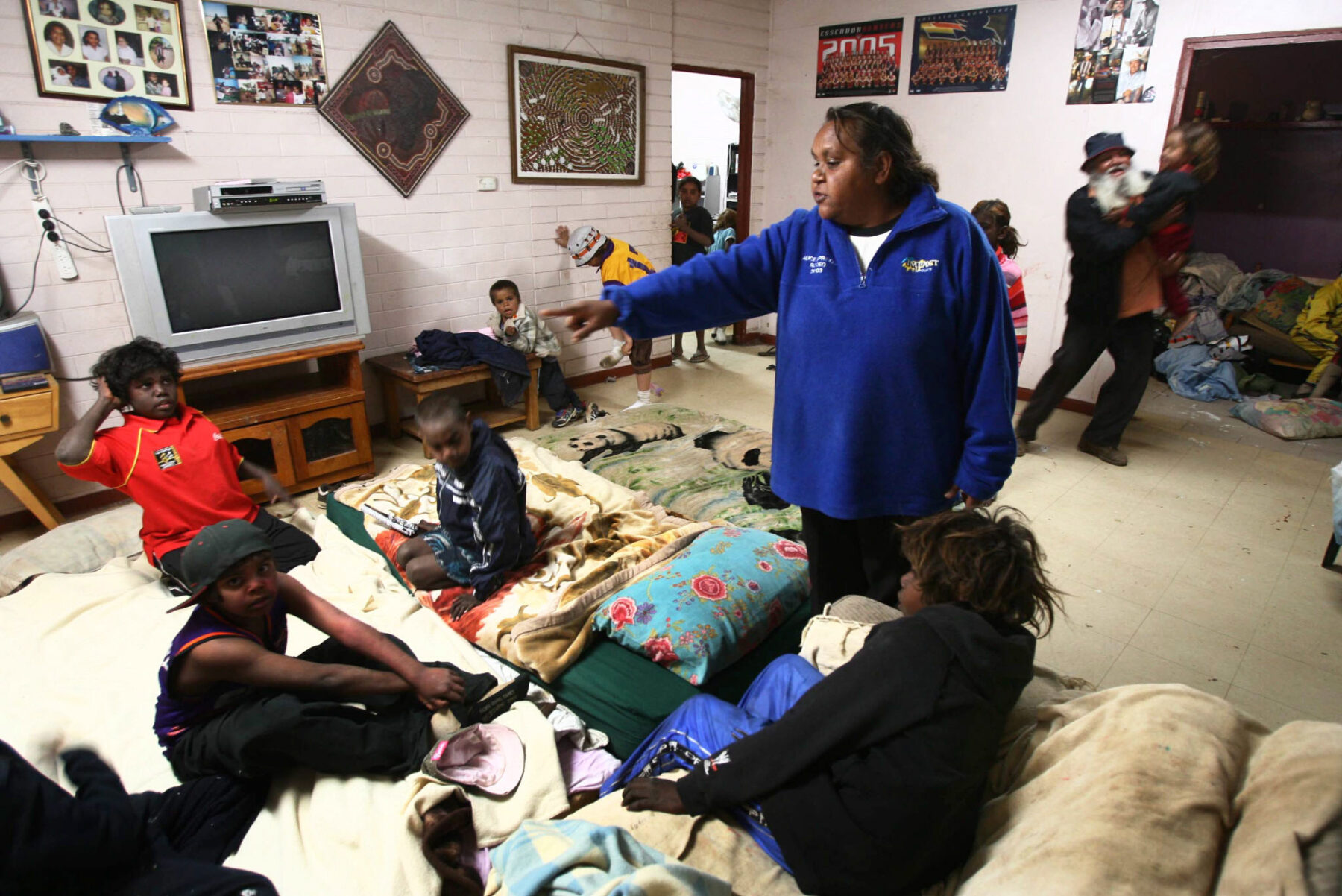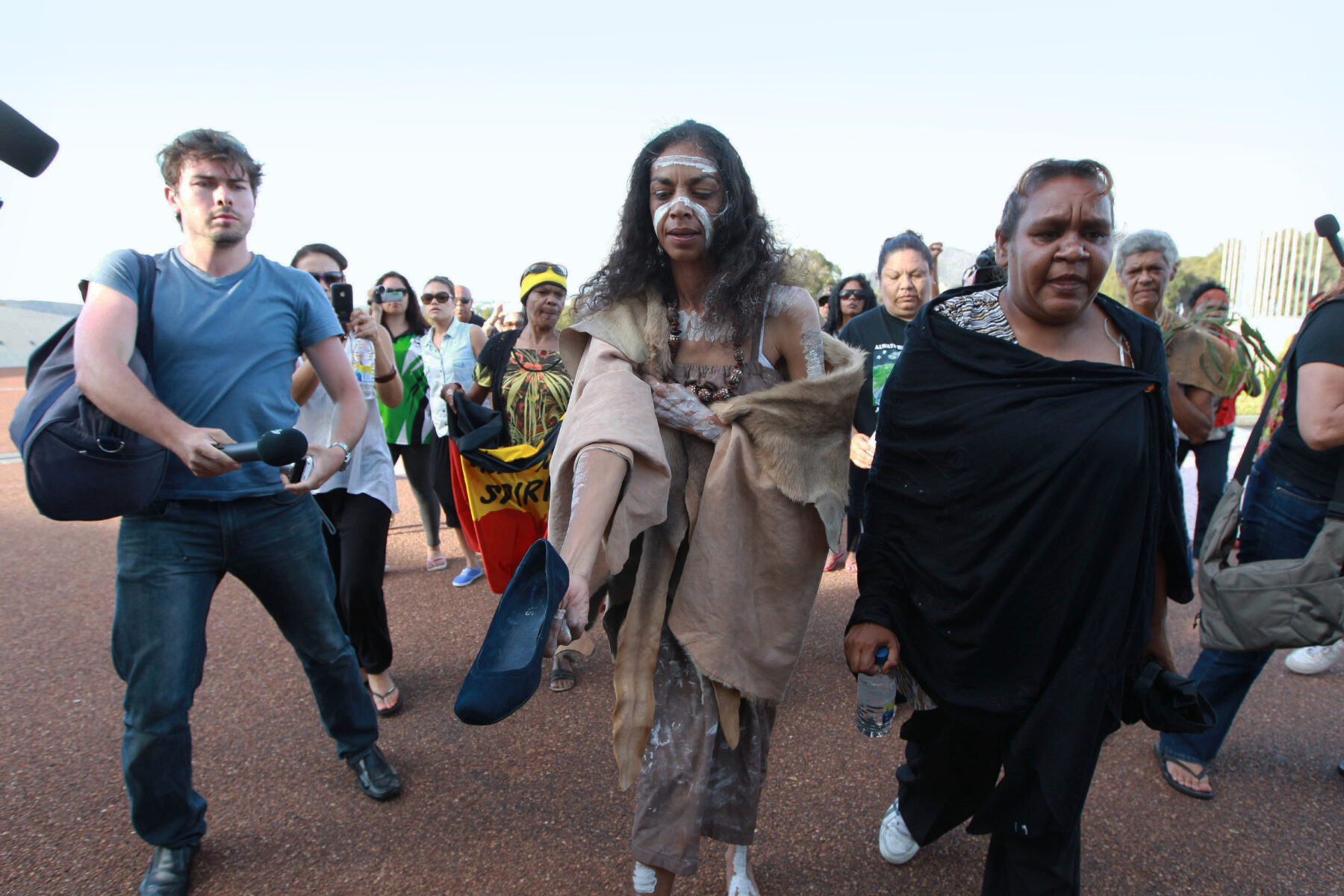Listening to the voices: Barbara Shaw

This is one of a series of interviews between First Nations advocate Thomas Mayo and the Indigenous community leaders he met when he toured Australia in 2019 with the Uluru Statement from the Heart.
Barbara Shaw
Kaytetye, Arrernte, Warlpiri and Warumungu, Northern Territory
After interviewing Barbara Shaw, all I can think about is her crew, the women of the Tangentyere Women’s Family Safety Group; the warm welcome they gave me, their strength and their solidarity.
The first time I visited them, Barbara and I told the group about where the Uluru Statement from the Heart came from and what it called for. We talked about what it could mean to the women’s communities. The next time, I updated them on the Uluru Statement campaign, then we had a great discussion about what a referendum is and how difficult it may be to win. Before Barbara and I left to find a quiet space to talk, Shirleen Campbell, a young cocoordinator for the group, who exuded courage and strength, made a fist and said, “We need to be strong and united, and we can win this! You can count on us here!”
These inspiring women are strong leaders in a community that has felt the worst of failed government policies. They are the people who have it harder than any other demographic in Australia – Aboriginal women living in a town camp in the Northern Territory. Barbara is a leader among them. She is a straight talker, with a cheeky sense of humour. She always speaks up, loud and clear, although her sharp style is softened with tender motherliness.
“My father is Kaytetye and Arrernte, and my mother is Warlpiri and Warumungu,” she tells me. “I live here in Alice Springs. I’m a fourth-generation town camper.” Barbara explains what an Alice Springs town camp is. “Way back when, before they even started building houses for Aboriginal people, we lived in tents in little pockets of dwellings on the outskirts of town. A lot of our camps that sit around Alice Springs were spread out, based on where the white fellas who needed labour were.”
Barbara’s family lives in the Mount Nancy town camp. “It’s on the banks of the Charles River,” she says. “I remember as a child, we would go up the hill, go down into the dry creek. My great‑grandmother would tell us kids to climb up in the gum trees and just bounce on the branches,” she says, reminiscing about finding bush tucker in the trees, including a sweet‑tasting treat that grew on the leaves. “I still do that with kids today, just go walking around once we know that it’s all on the trees,” she says. As she talks, Barbara’s eyes are like windows to a place full of sun, river sand and beautiful Arrernte flora and fauna. Bliss carries on every word as she revisits carefree times with her Elders. “We’d sit around the fire, telling stories, and all the old people would be telling us about our culture.”

Barbara’s father, Geoffrey Shaw, was born near his people’s sacred Dreaming site, west of Barrow Creek Hotel, in 1945. As a boy, Geoffrey would move between family groups in the town camps, speaking the different languages of the many people who were brought to Alice Springs. They were used as labour in the town and in the welfare outpost where he first went to school.
“When he was 18, Dad joined the army and he did two tours of Vietnam, one in Borneo and another in Malaysia. While he was in the jungle, there was a referendum to get us counted in the census. He went away not being counted as a citizen, but when he came back into the country, he was then counted as a citizen,” Barbara says. “But he still had to fight for seven years for his pension, and all the while he was suffering from the effects of war [PTSD].”
Barbara’s father continued to fight. “Dad’s really, really big on Aboriginal issues and that’s probably where I get my bite. He’s always had that fire in the belly. He started some of the first Aboriginal organisations here in Central Australia,” she says proudly.
Geoffrey was the general manager of the Tangentyere Council for about 21 years. He also helped set up the Institute for Aboriginal Development and the Central Australian Aboriginal Congress, a primary healthcare service for Aboriginal people living in and around Alice Springs.

In Barbara’s community– a town camp that started as a collection of tents and tin shacks – the state of the homes and the meagre facilities are poor. The living conditions are a far cry from the standards expected by most Australians; they are the result of a sad history of attempted genocide, slavery, exploitation, and policy failure after policy failure.
In 2007 the Howard government mobilised the Australian Army to impose the Northern Territory Emergency Response measures against all Aboriginal people living in communities in the NT, including Barbara’s. It was the infamous Intervention.
“Before the Intervention, all town camps in Alice Springs had housing managed by an association. We also had our land tenure in perpetuity under special-purpose leases,” Barbara says. “The Intervention changed the land-tenure system. Now lands are handed over to governments, both federal and Territory… The outcome is we sublease the land from the Northern Territory government. In place of our local association, there is now an executive director of township leases who is employed by Canberra and is located in Darwin.”
During the Intervention, waves of bureaucrats from interstate flooded in. “We were effectively disempowered,” Barbara says. “To convince us it was good, they said that in the past, they couldn’t do anything in our town camps or our communities because it was owned by the community. They said they wanted to come in and upgrade infrastructure, build new homes, and then wanted to basically have control to do those things.”
Barbara says the process was grossly mismanaged. “We could’ve managed it better ourselves when we had a housing association,” she says. “The changes made it even more of a cost to the taxpayer and it’s less efficient than when we did it ourselves.”

The Aboriginal Benefits Account (ABA), made up of mining royalties, is for Aboriginal people in the NT. “That money isn’t actually getting out to…the people who need it in the community,” Barbara says. “It’s needed for infrastructure in communities and for outstations and it’s needed for our organisations. It’s also needed by Aboriginal people who want to go into business in their area. But it is an Indigenous Affairs minister in Canberra that controls the ABA.”
Barbara sits on the ABA board and sees the applications for ABA funding that come in. The board discusses each application, but ultimately it is the minister who has the final decision on where money is spent. “It’s an absolute disgrace that so much money that is supposed to be spent for the benefit of Aboriginal people in the NT actually goes to organisations with other interests, or is spent in the capital, Darwin,” Barbara says.
Listening to Barbara, I am disgusted at how Indigenous Affairs ministers, over many years, have controlled millions of dollars of Aboriginal money yet achieved near nothing in closing the gaps in life expectancy, incarceration rates, homelessness and education between Indigenous and non‑Indigenous people. “The Intervention may have cost billions of dollars, yet it knocked many Indigenous communities to their knees. Elements of the Intervention continue. But who’s listening? Not the politicians.” Barbara wants to change this with a First Nations Voice. “When I went to the Uluru First Nations Constitutional Convention, I wanted to do something that could make sure nothing like the Intervention could ever happen again,” she says. “I’m interested in protecting our rights against discrimination. In the NT, the Commonwealth government suspended the Racial Discrimination Act 1975 so they could discriminate against us with the Intervention. And we know now that what they did didn’t benefit us, it hurt us, disempowered us, caused more social issues. That was my main thought with having a Voice.”





